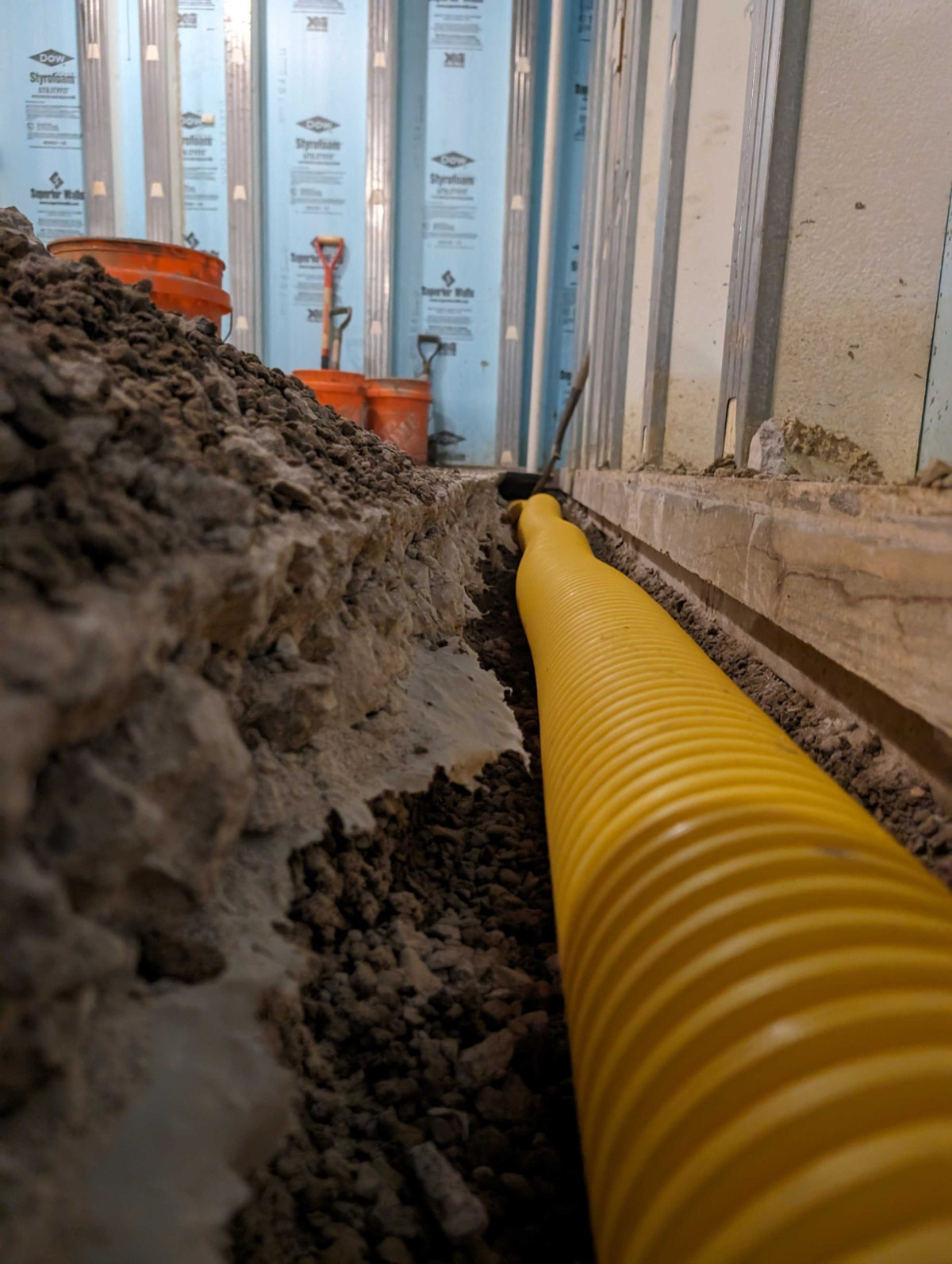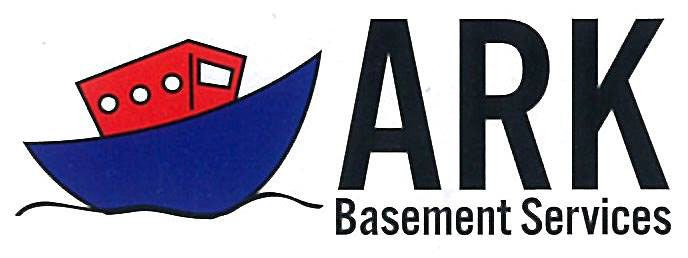Basements are an essential part of many homes, offering valuable space for storage, living areas, or utility access. But because they sit below ground level, basements are also highly vulnerable to water intrusion. A damp or flooded basement is more than just an inconvenience—it’s a threat to your home’s structural integrity, indoor air quality, and even your family's health.
Many homeowners wait too long to address basement moisture issues, hoping it will go away on its own or attempting short-term fixes that don’t get to the root of the problem. These issues can escalate quickly, leading to costly repairs if not handled early. Recognizing the signs and calling in professionals at the first indication of trouble can save you thousands down the line.
At ARK Basement Services, we specialize in diagnosing and solving moisture issues with long-lasting solutions tailored to your property. Here are the key warning signs that it’s time to consider professional basement waterproofing—and what you should do next.
1. Water Stains or Damp Spots on Walls and Floors
 One of the earliest and most visible signs of basement moisture is staining or dampness along the walls or floor. You might see a white, chalky residue called efflorescence, caused by minerals left behind when water evaporates. Or you may notice paint bubbling, peeling, or discoloration on finished surfaces.
One of the earliest and most visible signs of basement moisture is staining or dampness along the walls or floor. You might see a white, chalky residue called efflorescence, caused by minerals left behind when water evaporates. Or you may notice paint bubbling, peeling, or discoloration on finished surfaces.
These issues signal that water is seeping through your foundation, even if the basement isn’t flooded. If ignored, this moisture can lead to mold growth, material deterioration, and more serious water damage.
What to do: Don’t just repaint or mop—schedule a waterproofing inspection to identify the source of water intrusion and stop it at the foundation level.
2. Musty Odors or High Humidity
If your basement smells musty, stale, or earthy, there’s a good chance you’re dealing with hidden moisture or mold. Even if you can’t see visible water, excess humidity encourages mold growth and poor air quality. Over time, that air circulates into the rest of your home.
A basement that feels damp or clammy is not normal—and shouldn’t be ignored.
What to do: Professional waterproofing contractors can evaluate the air quality, check for mold, and install systems like sump pumps or dehumidifiers to keep humidity levels in check.
3. Cracks in Walls or Floors
Hairline cracks in basement walls or floors may seem harmless, but they can expand over time and allow water to seep in. Larger cracks or stair-step patterns in block walls can indicate shifting soil or foundation settlement—serious structural issues that require immediate attention.
These cracks often result from soil movement and external water pressure acting on the foundation over time.
What to do: If you see cracks—especially ones that are widening—contact a waterproofing and foundation repair specialist. Sealing the crack without addressing external pressure or drainage issues won’t solve the problem long-term.
4. Standing Water or Puddles After Rain
Water pooling on your basement floor is a clear sign that your home lacks adequate waterproofing. Whether it’s seeping through the floor slab, foundation walls, or from poor exterior drainage, standing water poses immediate risks to your belongings, flooring, and even your electrical systems.
Even small puddles can encourage mold growth or signal more serious issues below the surface.
What to do: Don’t just mop it up—investigate why the water is getting in. A professional can determine if your home needs a sump pump, interior drainage system, or exterior waterproofing solutions.
5. Mold or Mildew Growth
Mold isn’t always black and fuzzy—it can also appear as white, green, or yellow patches on walls, wood framing, or insulation. Mildew, a type of surface mold, typically grows in moist corners or on organic materials like cardboard or drywall.
In addition to causing damage to your home’s structure and finishes, mold can trigger allergic reactions, respiratory issues, and long-term health effects—especially in children, seniors, or those with asthma.
What to do: Professional waterproofing teams like ours at ARK Basement Services can safely remediate mold, improve ventilation, and design moisture control systems to prevent it from returning.
6. Rusting Metal Fixtures or Corroded Pipes
Excess humidity and water exposure will eventually rust metal components like support beams, ductwork, nails, or HVAC parts in your basement. You might also notice corroded plumbing pipes or discoloration around metal fixtures.
This damage can weaken structural elements and create safety hazards over time.
What to do: Waterproofing your basement helps regulate humidity and protect your home’s mechanical systems. In severe cases, our team can also recommend and coordinate any structural repairs needed.
7. Warped or Sagging Flooring Above the Basement
When water accumulates in the basement, it can affect the floors above. Wooden subflooring may absorb moisture, leading to sagging, warping, or squeaky boards. This can be particularly noticeable around door frames or heavy furniture areas.
It’s often an indirect sign that your basement is holding more moisture than it should.
What to do: A professional assessment will determine whether the problem originates from basement moisture or structural issues. Either way, waterproofing is likely part of the solution.
Why DIY Solutions Fall Short
It’s tempting to try basement fixes yourself—whether it’s applying waterproof paint or using a store-bought dehumidifier. Unfortunately, these methods rarely solve the root problem. They may mask symptoms for a while but won’t stop water from entering or pressure from building up around your foundation.
Without proper drainage systems, crack repair techniques, or moisture barriers, your basement remains vulnerable to recurring damage.
Professional basement waterproofing offers comprehensive, long-term solutions using high-quality materials and techniques. At ARK Basement Services, we tailor each system to your home’s construction, soil type, and drainage conditions to ensure maximum protection.
The ARK Basement Services Approach
Every waterproofing job starts with a thorough inspection. Our experienced team looks at interior and exterior drainage, foundation conditions, grading around your property, and existing signs of water damage. From there, we design a custom solution that may include:
Interior French drains to redirect water to a sump pump
Exterior excavation and sealing to block water at the foundation walls
Sump pump installation with optional battery backup
Vapor barriers and encapsulation for crawlspaces
Dehumidifiers to control indoor humidity
Foundation crack repair and structural reinforcements
We don’t offer one-size-fits-all systems—we provide real solutions based on the unique challenges your home faces. And we stand by our work with long-term warranties and honest service.
Don’t Wait Until It’s Too Late
Moisture problems don’t fix themselves. What starts as a little dampness can quickly become mold growth, damaged insulation, or a shifting foundation. Early action is key—and it often costs far less than waiting until damage is extensive.
If you’ve noticed any of the signs we’ve listed—whether it’s a musty odor, visible water, cracks, or mold—reach out to the professionals at ARK Basement Services. With years of experience in basement waterproofing and foundation repair, we’re here to protect your home from the ground up.
Contact us today to schedule a basement inspection and take the first step toward a drier, healthier home.





